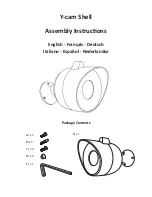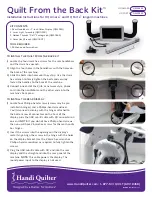
BattaMax User Manual
Revision 3.0
Page 11 of 13
windy
nation
10/04/2019
NOTE: Store in a cool, dry location, protected from the elements.
Disconnect all connections to the battery and charge the battery to 100% SOC. When batteries are taken out of
storage, they should be recharged before use.
Batteries in storage should be boost charged every 3 months or when the SOC drops below 50%.
5.1 T
EMPERATURE
E
FFECTS ON
S
TORAGE
5.1.1
Hot Environments (greater than 90°F or 32°C)
Avoid direct exposure to heat sources, if possible, during storage as batteries self-discharge faster in high
temperatures. If batteries are stored during hot summer months, monitor the voltage every month as opposed to
every 3 months.
5.1.2
Cold Environments (less than 32°F or 0°C)
Avoid locations where freezing temperatures are expected, if possible, during storage. Batteries can freeze in
cold temperatures if they are not fully charged. If batteries are stored during cold winter months, it is critical that
they are kept fully charged at all times.
5.2 R
ECYCLING
Batteries that have reached the end of their service life should be returned to a local or regional collection center
for recycling. Batteries should never be discarded in the trash or a landfill and all local regulations and
ordinances must be followed.
Lead acid batteries have fortunately been an environmental success with more than 98% of all battery lead
being recycled. Batteries are at the top of the list as one of the most highly recycled consumer products.
Windy Nation supports a clean environment and we hope that you will do the same.
6 TESTING AND SUPPORT
These battery testing procedures are guidelines only for identifying a battery that may need to be replaced. It is
recommended that batteries configured in a battery bank are the same type and the same vintage.
IMPORTANT: Shock Hazard
Clean the battery and check all terminals as stated in Section 4.3. Ensure the battery is fully charged prior to
testing.
6.1 O
PEN
C
IRCUIT
V
OLTAGE
For accurate voltage readings, batteries must remain idle at least 6 hours, preferably up to 24 hours.































